What was art in Benin like?
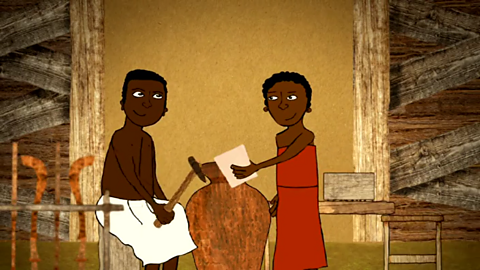
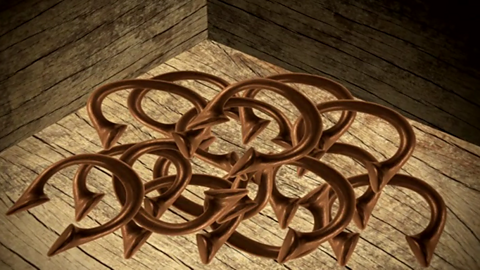
The people of Benin made many different kinds of art. Village craft workers made simple pots, weapons and tools.
They carved masks for ceremonies and they moulded sculptures of gods out of mud.
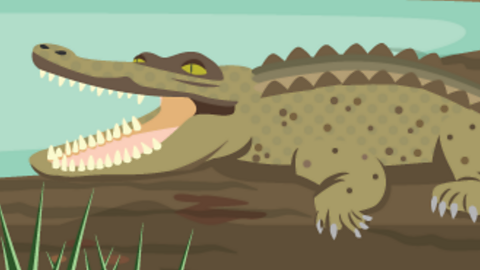
Guilds were groups of craft workers like wood carvers, ivory carvers, leather workers, weavers and blacksmiths.
Brass casters were only allowed to work for the Oba (king).

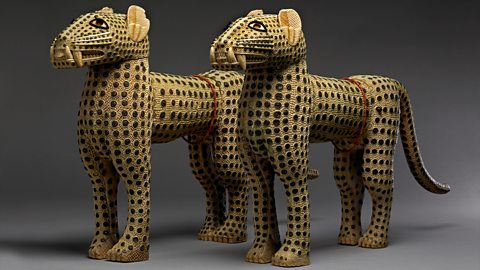
Benin art features people, animals and gods.
Crocodiles and leopards, appear many times in the art of Benin.
What materials did craft workers use?
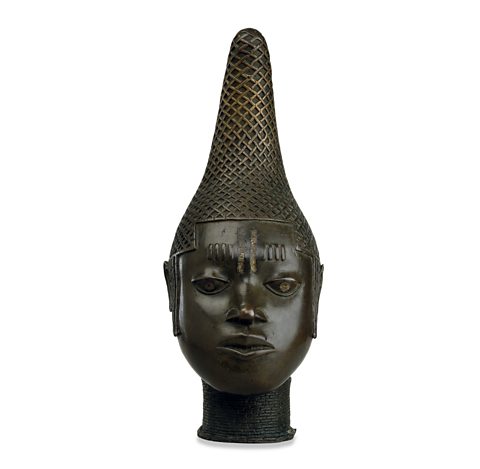
Craftworkers used:
- Clay
- Wood
- Leather
The most precious materials were:
- Brass
- Coral
- Ivory

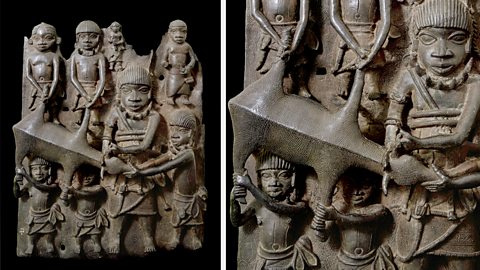
Watch: Benin bronze
Find out how bronze statues were made
Narrator: Hello, future people of the UK. I’d like to show you around the Benin civilisation.
But to do that, you’ve got to go back 500 years. Before Queen Victoria, before the Spanish Armada, right back to the time of Henry VIII. Now, head south over France and into Africa.
We are in that little corner where Nigeria will be one day. You’ve made it! Welcome to the Benin civilisation. My name is Ibi. I’m on my way to the Oba’s Palace.
The Oba is our leader, but we hardly ever see him because he stays in there the whole time. Except for once a year.
Next week, he’ll come out of those gates for a big parade. The whole town is getting ready for the event. That’s why I’m here.
The Oba wants a special ornament made so he can show off his power. Cripes! This will keep my dad busy!
My dad is a bronze caster. He makes all kinds of stuff. But the Oba wants him to make a very fancy mask in time for the parade. This is going to be tight.
Dad uses these copper hoops, called manilla, as the main ingredient in bronze. But, oh, no!
It looks like we’ve run out of the other ingredient, tin!
Maybe our neighbours will have some tine we can trade for this copper. Follow me!
We’re a big trading nation so our city is organised into trading districts, making all kinds of different things. Hopefully one of them will have some tin.
Let’s try the… metal district? Nope.
Carpentry district? Nope.
Pottery district? Nothing.
This is bad. It’s not a good idea to disappoint the all-powerful Oba.
Some say he’s got magical powers. Hmmmm…
Ok, my last hope is the weaving district. Though I doubt they’ll have any tin.
Let me guess, no tin? Brilliant!
What are the chances? Let’s do a deal.
Hmmm… I’ve not seen a cup like this before. The weavers say it was traded for some cloth with merchants from very far away.
You see, we trade with the whole of Africa and some of our goods come from as far away as India.
But, apparently, some particularly strange traders showed up recently. They had weird, pale skin, beards and strange-looking clothes.
No-one had seen them before. But rumour was, they were from a place called Portugal.
They wanted to set up a direct trade route from their homeland all the way to here.
Ok, so you are probably wondering, How you turn all this into a work of art?
Well, step 1 -make your design out of wax.
Step 2 – cover with sand, leaving a hole.
Step 3 – make bronze by melting down the copper manilla and mixing with tin.
Step 4 – pour into the hold, which boils off the wax.
Step 5 – wait for it to cool.
Then, after a few days’ polishing it’s perfect for the Oba.
All done. What do you think? Right, I’d better get this to the Oba before he puts a spell on me or something.
Here you go. Please give this to the Oba.
He should be out any minute now. Here he comes! And yes, those are pet cheetahs.
And there’s the mask. Brilliant! I’m so relieved we made it in time.
Well, that’s about all. The Portuguese will carry on coming and more Europeans will arrive to start trading, too.
But in the end, it will all go wrong for us when the British invade.
That will spell the end of our empire. And all this, it will be history.
How were Europeans shown in art?

The craft workers of Benin often showed Europeans in their art.
Sometimes they have a beard and sometimes they wear armour and hold a gun.
The Obas had a good relationship with merchants from Europe. Around the 1800s the Europeans decided they wanted to take their land.
- In the late 1800s, European countries competed with each other for African land.
- They took control of the African kingdoms and built their own empires.
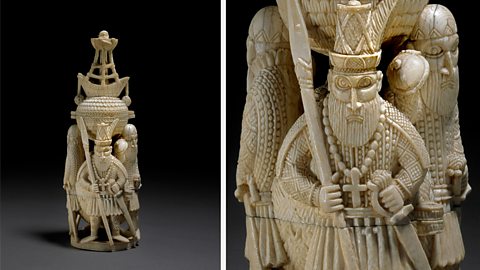
Benin bronzes today

- Many bronzes were taken in 1897 when the city was looted (forcefully taken), invaded by the British and made part of the British Empire.
- These have been shown in museums around the world like the British Museum.
- Some people are asking for the bronzes to be returned.
- Some museums are now returning them to the country they came from.
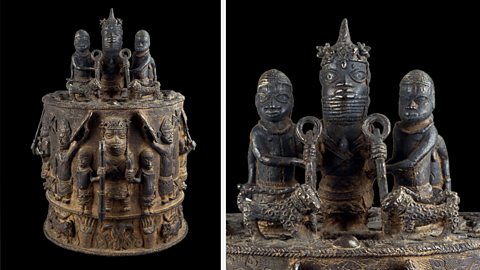
Activities
Activity 1: Animals in art
Click below to find out about common animals in Benin art.
Activity 2: Quiz – Art of Benin
Bitesize Primary games. gameBitesize Primary games
Play fun and educational primary games in science, maths, English, history, geography, art, computing and modern languages.

More on Kingdom of Benin
Find out more by working through a topic
- count8 of 8
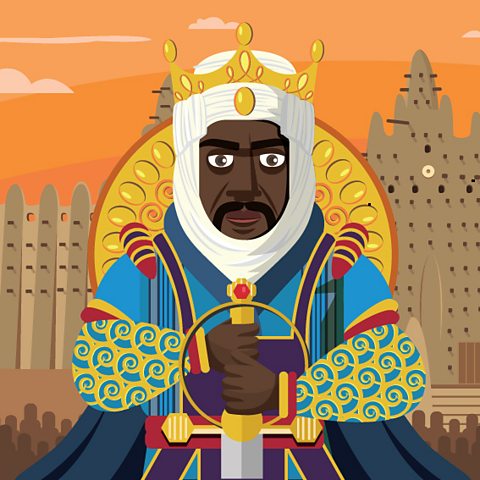
- count1 of 8
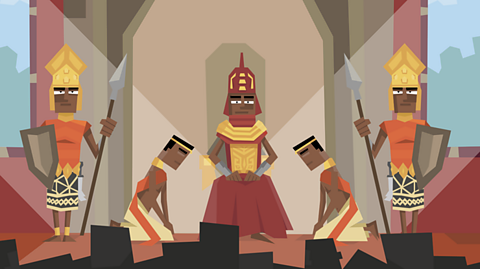
- count2 of 8
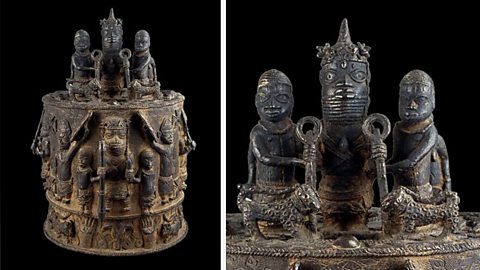
- count3 of 8
